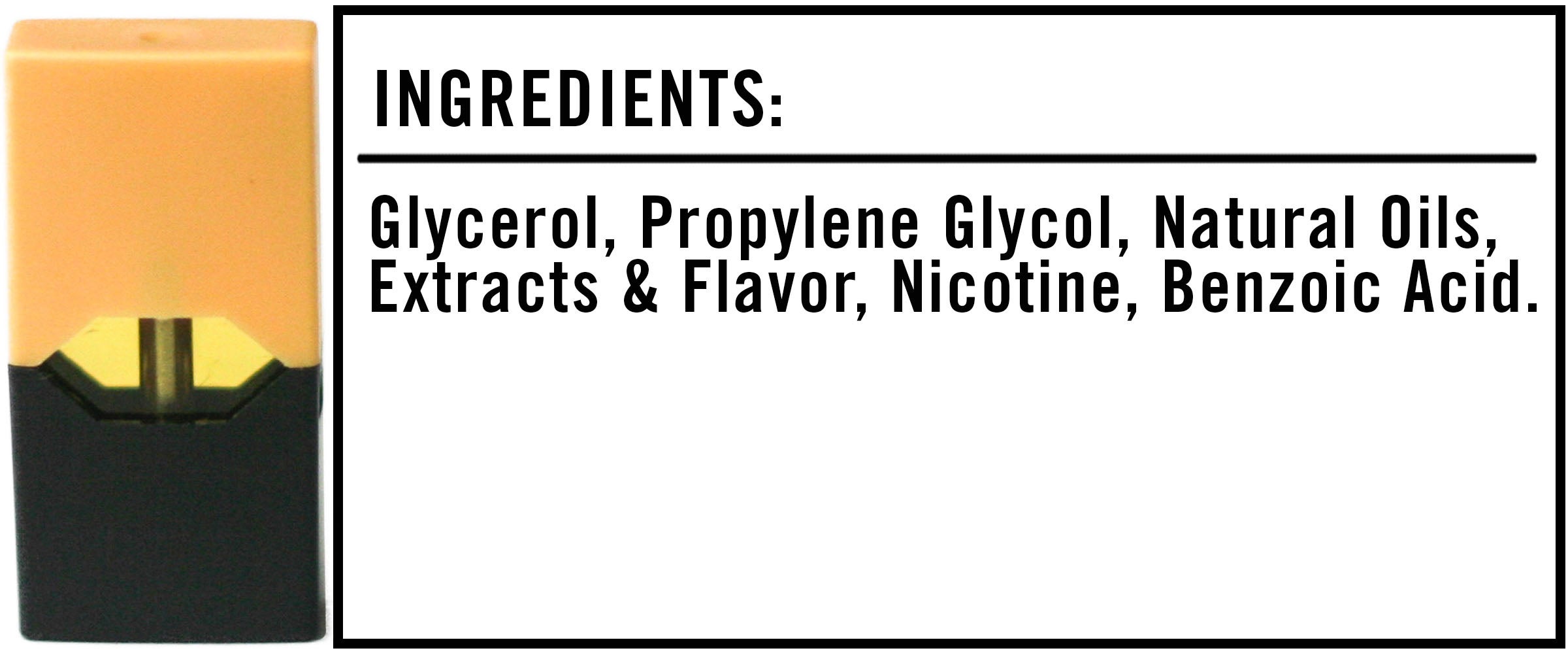We’re often told that you should never eat anything (or put anything on your body) if you don’t recognize everything on the ingredients list. But since most of us have no idea what xanthan gum or potassium benzoate are — or more importantly, what they’re doing to our bodies — we’re decoding the ingredients in the many things Americans put in (and on) themselves with the help of an expert.
This edition: Juul Pods, which contain six separate ingredients that we’ve broken down in the exact order they appear on their website.
The Ingredients

1) Glycerol: Glycerol is a sweet-tasting liquid found in plants and animals. It has many uses, including making explosives and antifreeze, but glycerol is usually added to vaporization liquids as a humectant, which means it provides moisture. One recent study found that even one drag from a nicotine-free vape pen containing glycerol can cause irritation of your airways. “This study shows that already after one puff of the shisha-pen the inhaled concentration is sufficiently high to potentially cause irritation of the airways,” the researchers conclude.
Additionally, when glycerol is heated to 280 degrees Celsius, the carcinogenic compound acrolein is created — and while some claim that Juuls never reach those temperatures (which remain unspecified on their website), a recent study found that levels of acrolein are “significantly higher” in teenage e-cigarette users when compared to non-users. Another recent study also found that e-cigarette users showed increased DNA damage in their mouths related to acrolein exposure. All of which means, while we can’t say for certain that Juuls produce acrolein, there is certainly evidence to suggest that it’s possible.
2) Propylene Glycol: Similar to glycerol, propylene glycol is frequently added to vaporization liquids as a humectant. When heated, propylene glycol produces a smoke-like vapor, which means this ingredient is responsible for the sick clouds that you create while smoking your Juul. Again, though, propylene glycol can cause irritation of your airways.
3) Natural Oils: These natural oils presumably change depending on which flavor your pod contains. For instance, the menthol Juul pod would obviously contain menthol oil. The science behind what smoking such oils does to our body, however, remains uncertain.
4) Extracts and Flavor: I combined these two ingredients, since they both provide flavor. But what these flavoring agents actually are remains unclear.
5) Nicotine: The amount of nicotine in one Juul pod is roughly equal to the amount of nicotine in a pack of cigarettes, according to their website, which might come as a surprise to your average pod-a-day vaper. Needless to say, nicotine is the ingredient responsible for everyone becoming addicted to Juuling: One recently published government survey found that 1.3 million more teens vaped in 2018 than the year prior, and the popularity of Juul certainly seems to be responsible. On the plus side, Juul recently announced that they’re beginning to offer pods with lower nicotine contents.
6) Benzoic Acid: Benzoic acid is widely used as a food preservative; however, it can also be used to increase the potency of nicotine without adding even more nicotine — which is exactly why it can be found in Juul pods. Unfortunately, some studies have found the benzoic acid found in Juul pods can be carcinogenic; however, others have refuted this claim.
The Takeaway
I shouldn’t need to tell you that smoking is bad, even in the form of Juuling. So if you don’t already Juul, don’t start. And if you do, consider joining the growing group of Juulers who are already trying to quit. Your lungs will be a whole lot happier.
*This story has been updated to include more information about the carcinogenic compound acrolein.

